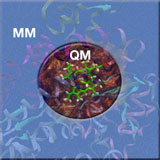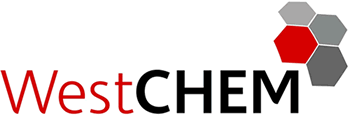Computational Chemistry & Simulations Group

Computational Chemistry, Simulations & Modelling in Glasgow
- Dr Anna Stradomska-Szymczak, U. of Glasgow
- Dr Tell Tuttle, U. of Strathclyde
- Dr David Palmer, U. of Strathclyde
- Dr Paul Mulheran, U. of Strathclyde (Chemical Engineering)
- Dr Karen Johnston, U. of Strathclyde (Chemical Engineering)
- Prof Maxim Fedorov, U. of Strathclyde (Physics)
- Dr Ben Hourahine, U. of Strathclyde (Physics)
- Dr Blair Johnston, U. of Strathclyde (SIPBS)
Computational Chemistry and Simulations Group
Research topics
- Enzymatic reaction mechanisms
- Computational transition-metal and organometallic chemistry, homogeneous catalysis
- First-principles and QM/MM molecular dynamics
- Sampling techniques and free-energy calculations
We use computer simulations to get insight into chemical reactions, in particular catalytic reactions. Enzymes are catalytically active proteins. They are involved in virtually all chemical transformations in living organisms. Computer simulations provide a detailed picture at the atomic and molecular level of how the catalyst works. One obtains information about the reaction rates and the overall energetics of the processes as well as about the properties of the molecules involved in the reaction, including the catalysts themselves, which helps their identification in experiments. The effects of modifications to the catalyst or the reacting molecules can often be explored more easily in the computer than at the bench. The simulations contribute to a better understanding of the chemical processes and thus to improving the catalysts.
The computational methods used range from simple, inexpensive "molecular mechanics" (MM), which is essentially a ball-and-spring model of the molecules, to elaborate quantum-mechanical (QM) methods that account for the quantum nature of the electrons and allow for an accurate description of chemical reactions. Combined QM/MM methods describe only the part of the molecule where the reaction is taking place with an expensive QM method and use MM for the remainder. They are especially suited for enzyme reactions, where the reaction is confined to the "active site".
